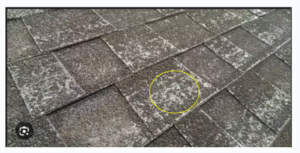Canvassing
Canvassing is a marketing technique that involves direct contact with potential customers or clients to promote a product, service, or cause.
Field Marketing Employment Agreement
General information and regulations of Avalon Roofing and Exterior
Avalon Employee Public Image and Customer Service Pledge
Perception of the business that affects customers
Avalon Field Marketing Behavioral Policy
Understanding the core policy's
Field Marketing the Basics
Training and Continuing Education,
Dress Code,
Technology,
Field Marketing Door Knocking Objectives,
How Avalon Evaluates Field Marketers
Avalon Field Marketing Vehicle Use and Mileage
Using company or personal vehicles
Avalon Field Marketing Training Schedule and Training Pay
Understanding what Training will look like and how much pay you will receive
Lead Generator Basics
Canvassing Basics
How a Shingle is Put Together
What to know about every layer of a Shingle
Identifying damage
How to identify damage to a roof
What To Look For
Examples of what to look for while canvassing
How to Approach the House
Knowing how to look, knock, and mark the house
Using the Slap System For Appointment Setting
Following the SLAP formula
Scripts (Initial Contact Options) (S, L, A)
Reference scripts to go by while at the homeowner's door
Rebuttals
What to do when you run into push back
Extra Videos to Watch
Different looks on how to Canvas
No questions yet
Be the first to ask your question! You’ll be able to add details in the next step.
Ask a new question
Add an answer
Heavy Granule Loss
Through years of research in our state-of-the-art hail lab, we have demonstrated time and again the importance of granules on asphalt shingles and the critical protection they provide. Over time, heavy rain, hail (no matter how small), ice, impacts from wind-driven debris, and other natural elements remove these granules in small or large quantities. Any sections of missing or reduced granules create a pocket for water and ice, collected debris, and other age accelerants. You may first notice granules accumulating in the gutters, even in a relatively new roof. This is normal, but consider the granular loss over many years and how quickly that can be accelerated in areas prone to weather and wind impacts.
Caused by extreme heat, heavy rain, hailstorm, and windstorm
Old or damaged roofs
Bald spots

Hailstorms can cause extensive damage to roofs, both immediately visible and insidiously hidden. The immediate aftermath of a hailstorm might reveal shattered shingles, dents, and punctures, but what’s often overlooked is the subtle damage that can grow over time, potentially leading to larger issues if not addressed promptly.
Visible Hail Damage
- Cracked or Missing Shingles: When hailstones strike, they can crack or completely dislodge shingles, leaving the underlying layers exposed to the elements.
- Dents and Punctures: Metal roofing and softer materials can show dents and punctures, which can compromise the integrity of the roofing system.
Invisible Hail Damage
- Granule Loss: Hail can knock granules off asphalt shingles, reducing their effectiveness and lifespan.
- Underlying Structural Damage: The force of hailstones can also damage the roof deck and other underlying structures, leading to leaks and water damage over time.
Long-term Effects
If left unaddressed, the damage from hail can escalate, leading to:
- Water Intrusion: Small punctures and cracks can allow water to seep in, causing rot, mold growth, and further structural damage.
- Decreased Insulation Efficiency: Damaged roofs can compromise the insulation of your home, leading to higher energy bills.
- Decreased Property Value: Visible and underlying roof damage can significantly reduce the value of your property.

